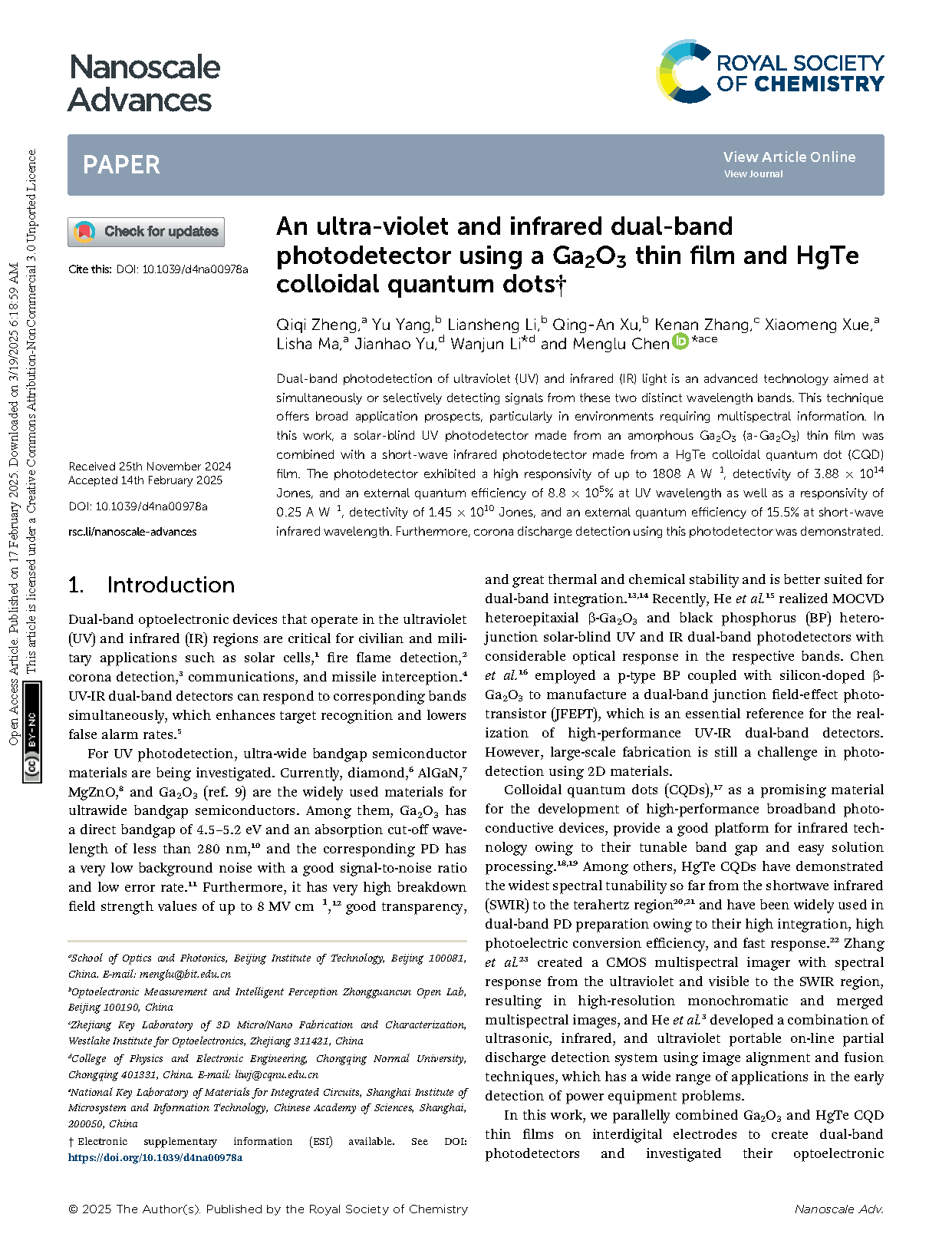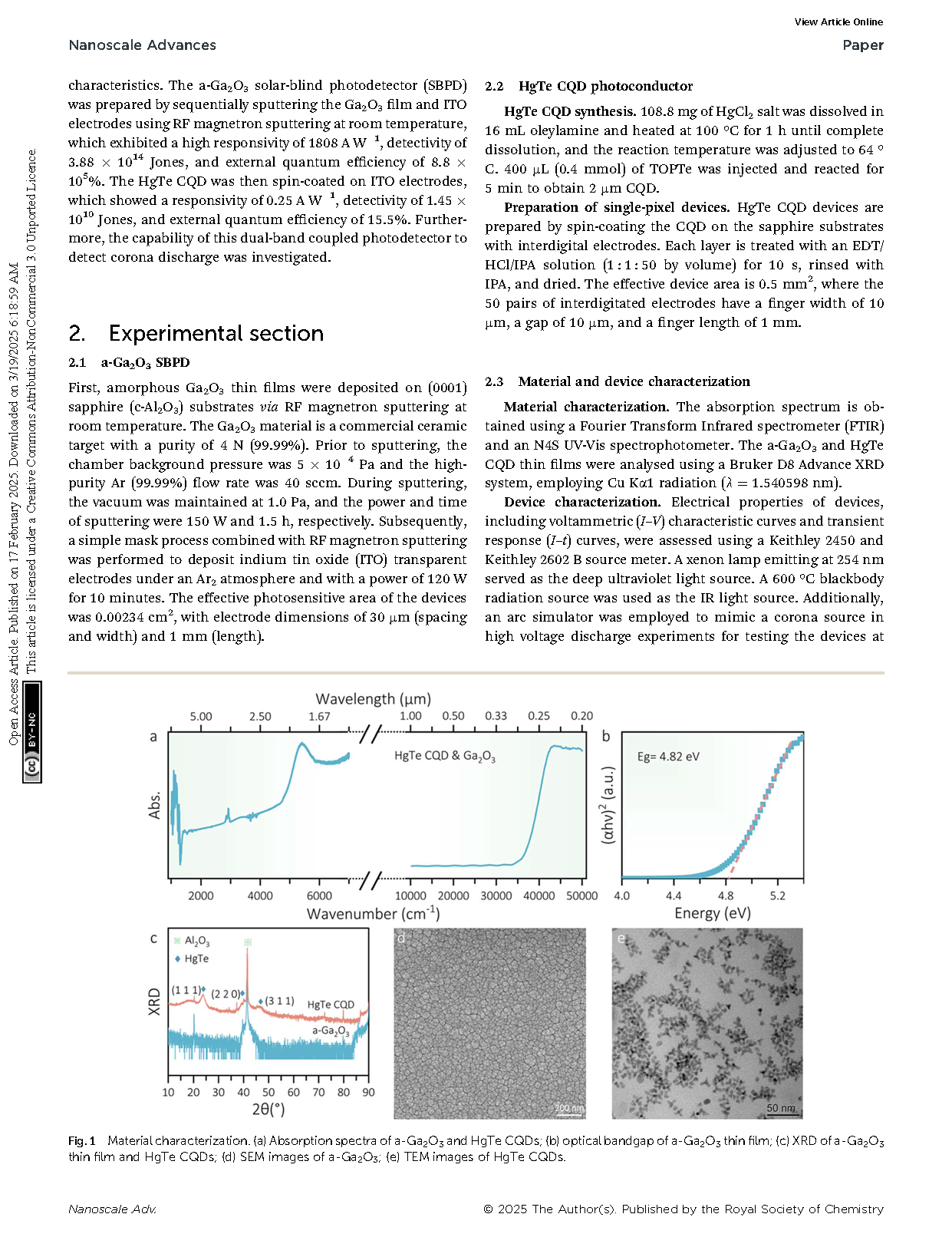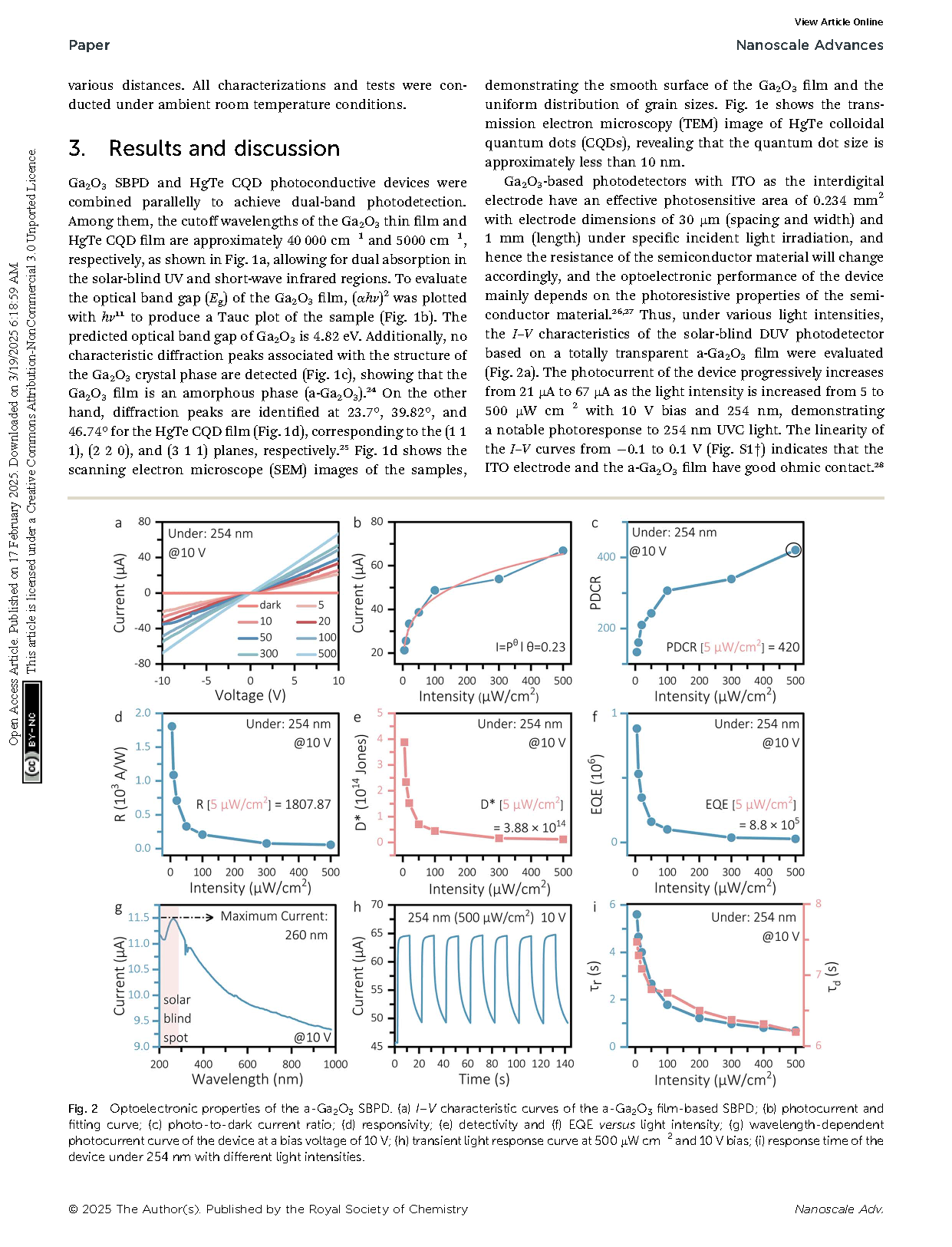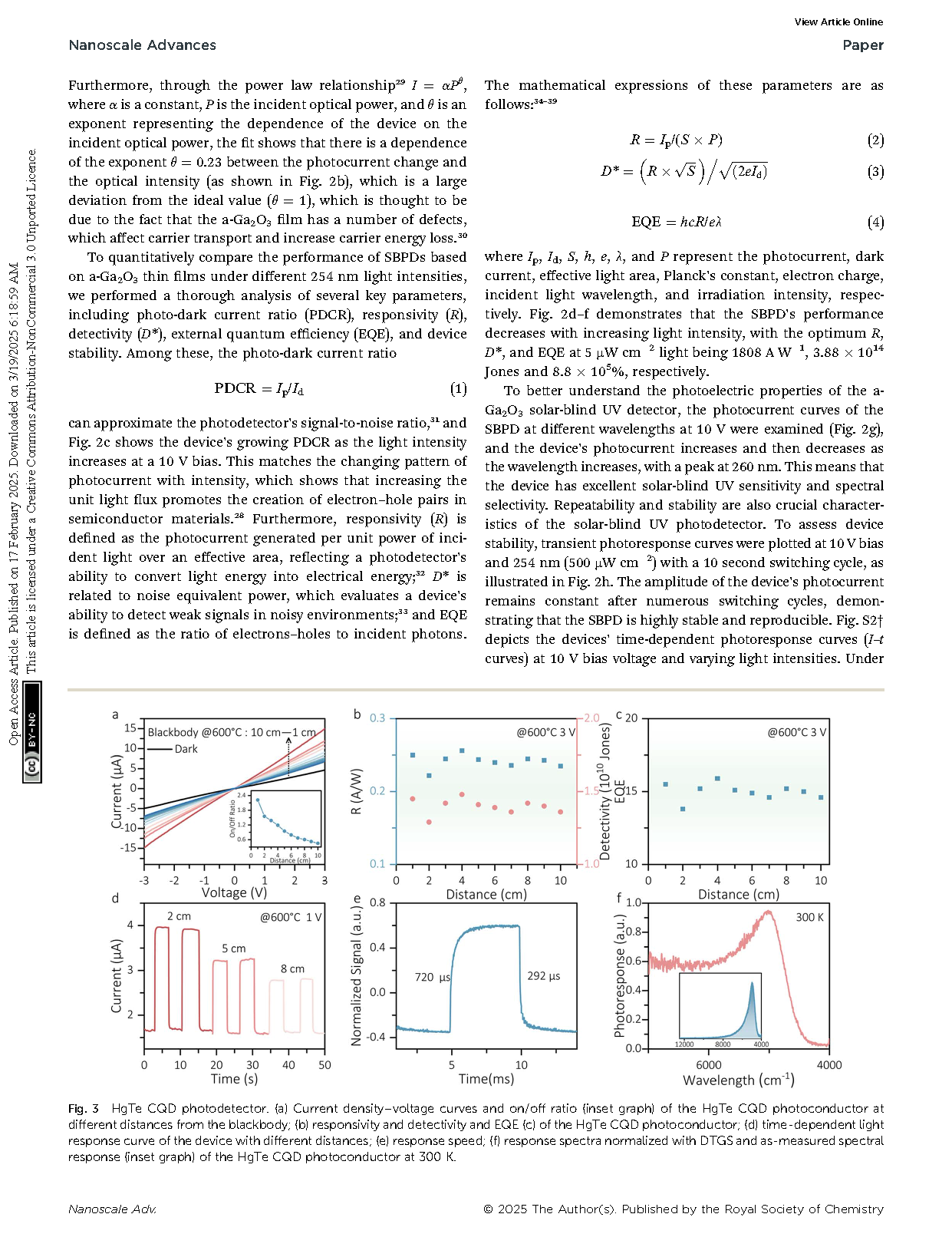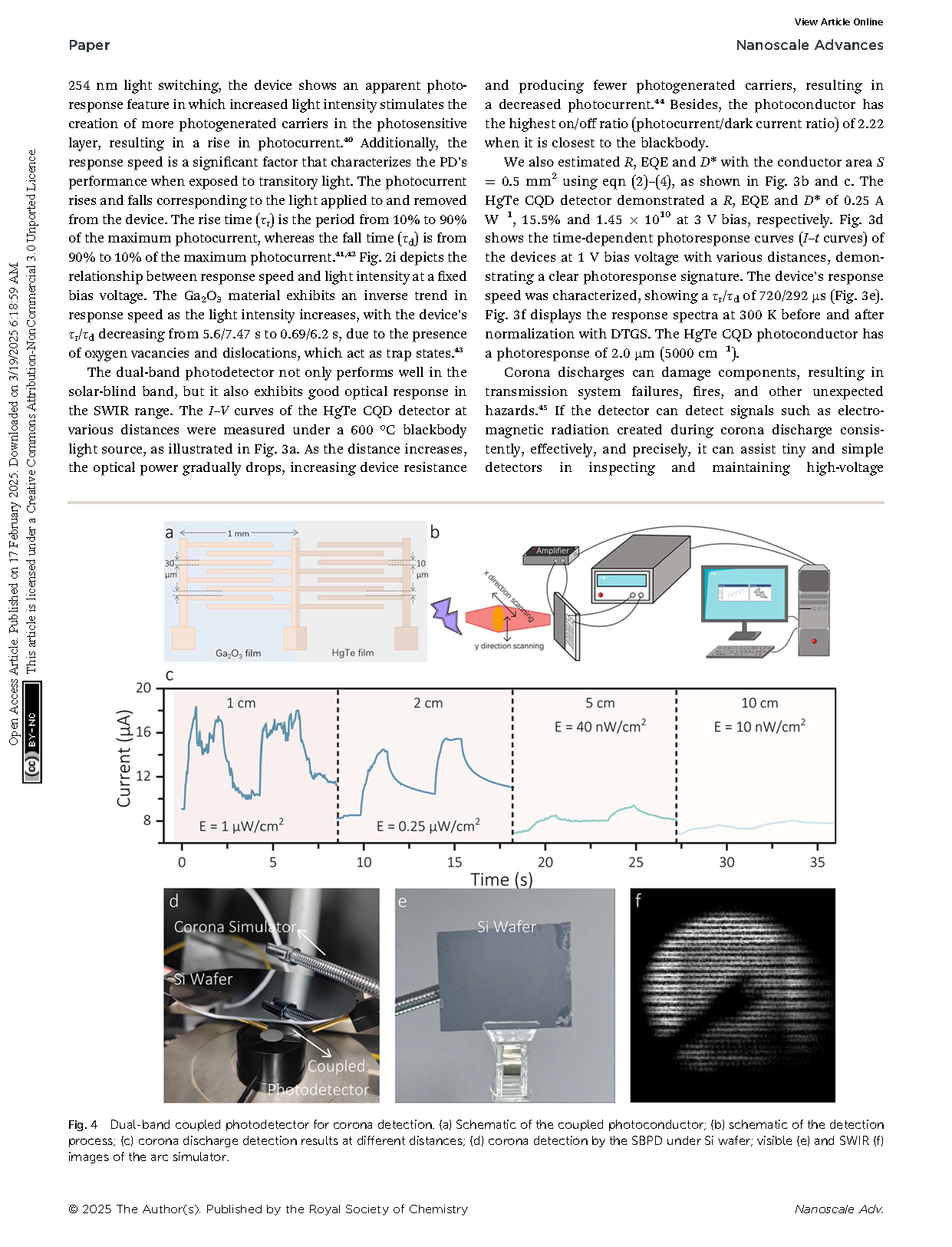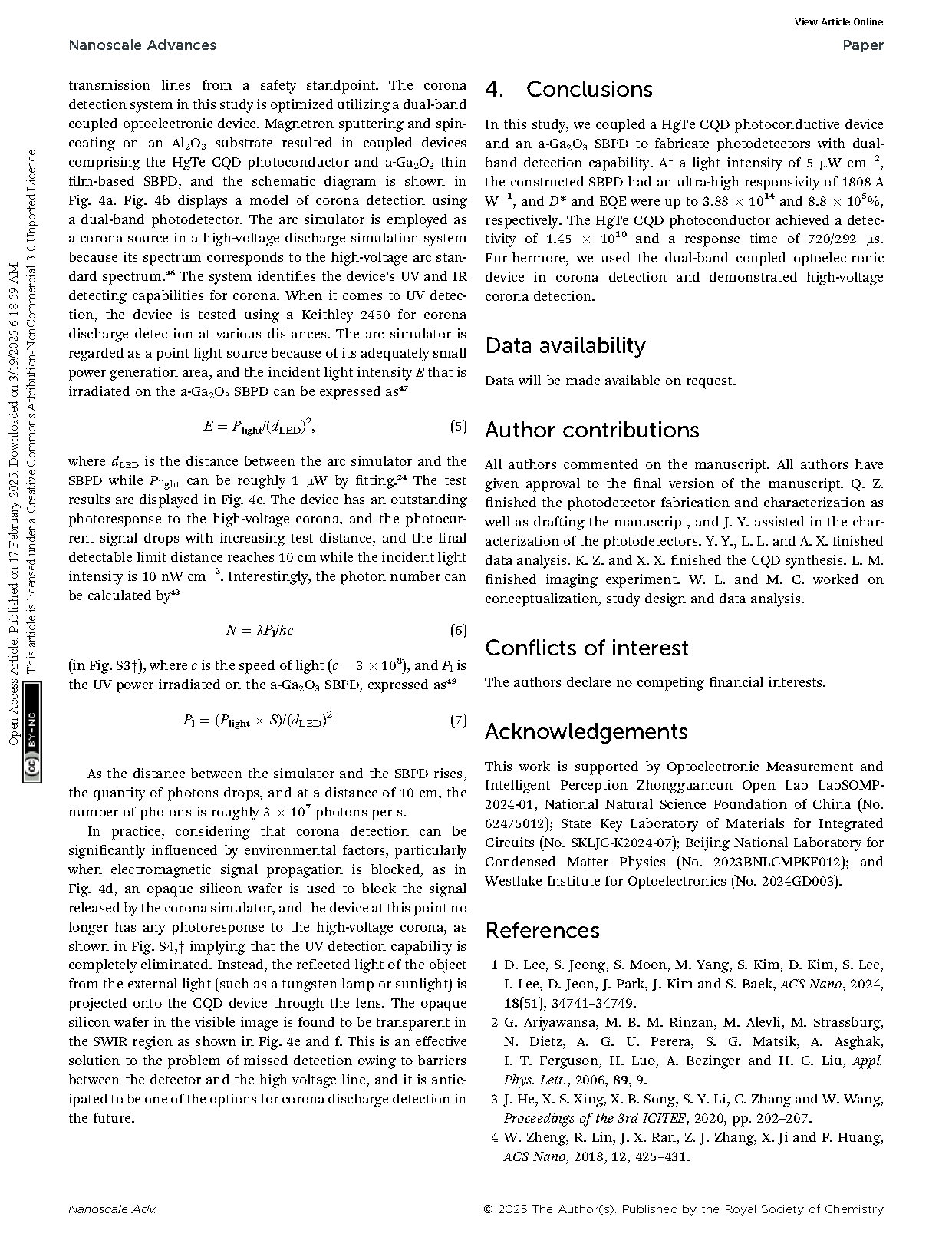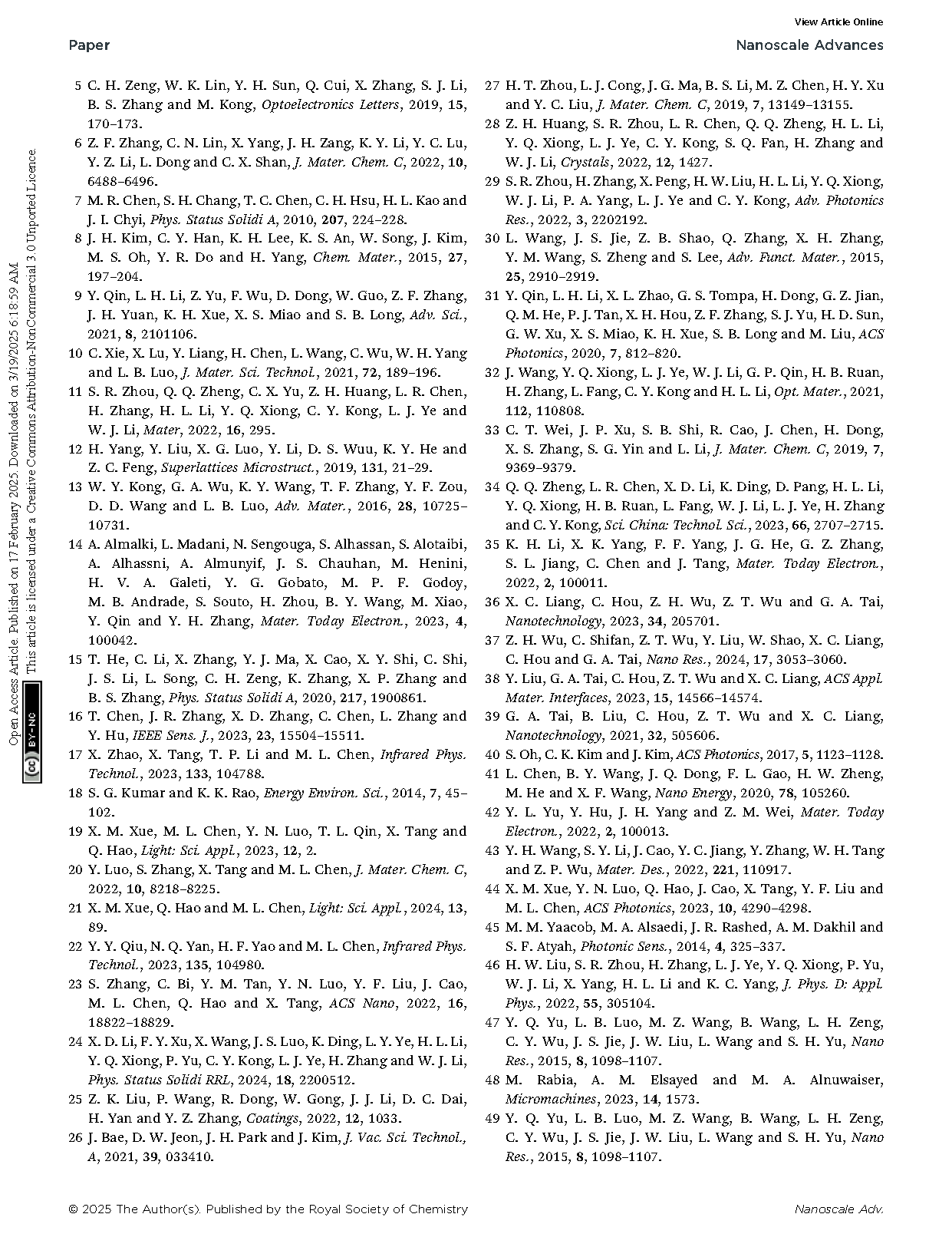

【Domestic Papers】Beijing Institute of Technology --- An ultra-violet and infrared dual-band photodetector using a Ga₂O₃ thin film and HgTe colloidal quantum dots
日期:2025-04-01阅读:493
Researchers from the Beijing Institute of Technology have published a dissertation titled "An ultra-violet and infrared dual-band photodetector using a Ga2O3 thin film and HgTe colloidal quantum dots" in Nanoscale Advances.
Project Support
This work is supported by Optoelectronic Measurement and Intelligent Perception Zhongguancun Open Lab LabSOMP-2024-01, National Natural Science Foundation of China (No. 62475012); State Key Laboratory of Materials for Integrated Circuits (No. SKLJC-K2024-07); Beijing National Laboratory for Condensed Matter Physics (No. 2023BNLCMPKF012); and Westlake Institute for Optoelectronics (No. 2024GD003).
Abstract
Dual-band photodetection of ultraviolet (UV) and infrared (IR) light is an advanced technology aimed at simultaneously or selectively detecting signals from these two distinct wavelength bands. This technique offers broad application prospects, particularly in environments requiring multispectral information. In this work, a solar-blind UV photodetector made from an amorphous Ga2O3 (a-Ga2O3) thin film was combined with a short-wave infrared photodetector made from a HgTe colloidal quantum dot (CQD) film. The photodetector exhibited a high responsivity of up to 1808 A W−1, detectivity of 3.88 × 1014 Jones, and an external quantum efficiency of 8.8 × 105% at UV wavelength as well as a responsivity of 0.25 A W−1, detectivity of 1.45 × 1010 Jones, and an external quantum efficiency of 15.5% at short-wave infrared wavelength. Furthermore, corona discharge detection using this photodetector was demonstrated.
Conclusions
In this study, we coupled a HgTe CQD photoconductive device and an a-Ga2O3 SBPD to fabricate photodetectors with dual-band detection capability. At a light intensity of 5 μW cm−2, the constructed SBPD had an ultra-high responsivity of 1808 A W−1, and D* and EQE were up to 3.88 × 1014 and 8.8 × 105%, respectively. The HgTe CQD photoconductor achieved a detectivity of 1.45 × 1010 and a response time of 720/292 μs. Furthermore, we used the dual-band coupled optoelectronic device in corona detection and demonstrated high-voltage corona detection.
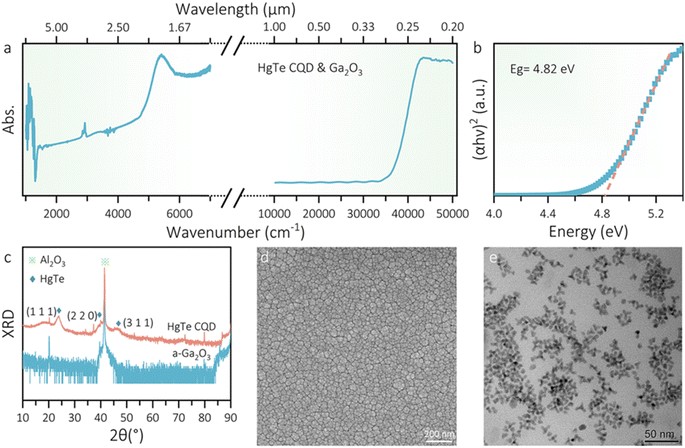
Fig. 1 Material characterization. (a) Absorption spectra of a-Ga2O3 and HgTe CQDs; (b) optical bandgap of a-Ga2O3 thin film; (c) XRD of a-Ga2O3 thin film and HgTe CQDs; (d) SEM images of a-Ga2O3; (e) TEM images of HgTe CQDs.
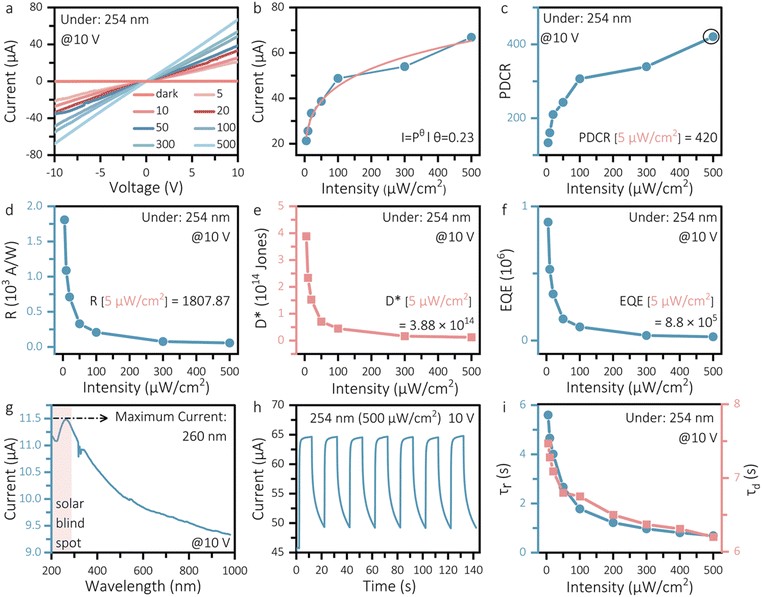
Fig. 2 Optoelectronic properties of the a-Ga2O3 SBPD. (a) I–V characteristic curves of the a-Ga2O3 film-based SBPD; (b) photocurrent and fitting curve; (c) photo-to-dark current ratio; (d) responsivity; (e) detectivity and (f) EQE versus light intensity; (g) wavelength-dependent photocurrent curve of the device at a bias voltage of 10 V; (h) transient light response curve at 500 μW cm−2 and 10 V bias; (i) response time of the device under 254 nm with different light intensities.
DOI:
doi.org/10.1039/D4NA00978A
